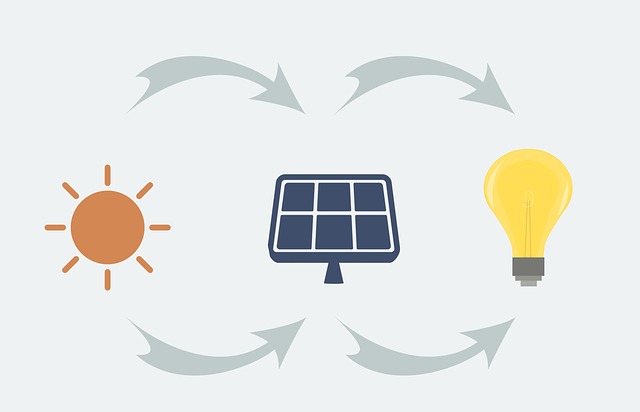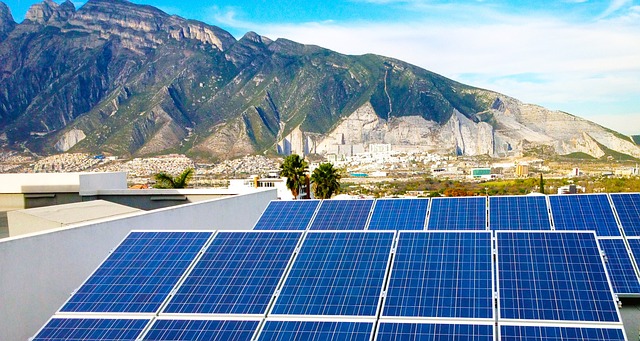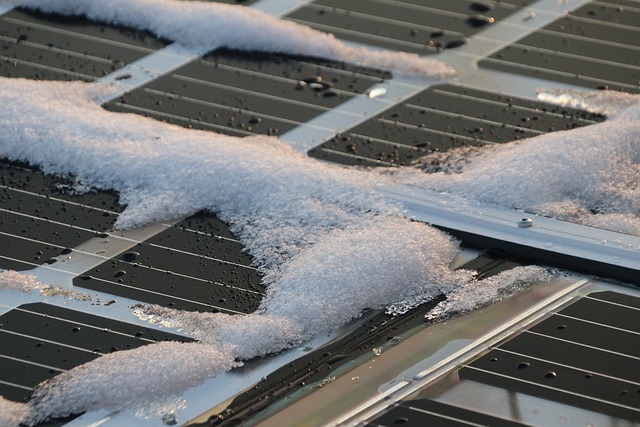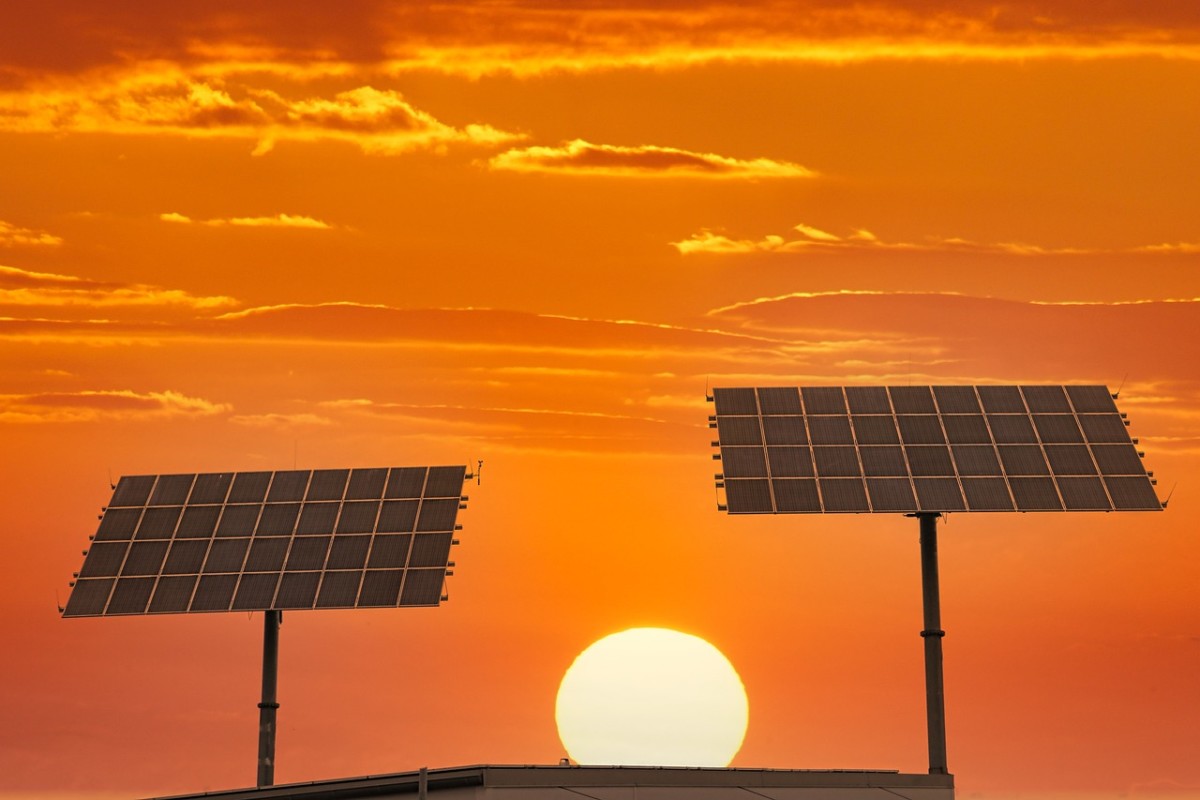How is solar energy converted into electricity?
In this article we will explore the process and learn. How is solar energy converted into electricity?
We’ll look at the different types of solar cells. Discuss the efficiency of the conversion process.
And explain the various applications that enjoy this technology.
The use of solar energy to generate electricity is becoming popular in many parts of the world.
Solar energy has an abundant and clean power source. That’s tapped into with the right technology.
By converting solar energy into electricity. We are able to reduce our reliance on more traditional power plants such as coal and nuclear power.
Table of Contents
- Introduction to Solar Energy Conversion
- The Photovoltaic Effect
- Solar Panels and Their Role in Conversion
- Inverters and Their Role in Conversion
- The Benefits of Solar Energy Conversion
- What are some disadvantages of solar energy?
- Challenges of Using Solar Energy for Electricity
- How can solar energy be used to power a home or business?
- Solar farms in the United States
Introduction to Solar Energy Conversion
Solar energy will convert into electricity. Through a process known as photovoltaic (PV) conversion.
In this process, solar panels made of silicon or other semi-conductive materials. Absorb the sun’s energy (sunlight) and convert it into electricity.
The absorbed sunlight causes electrons in the material to become excited. Which creates an electrical current that’s harnessed used to power homes and businesses.
Solar panels installed in areas with high levels of sun exposure. Maximize the amount of energy generated.
The angle and positioning of the panels also play a crucial role. In optimizing their efficiency.
Once the electricity, generated by the solar PV cells, it’s sent to an inverter. Where it’s converted from direct current (DC) to alternating current (AC). Which is suitable for use in households and businesses.
Solar energy conversion offers a clean, sustainable way to generate electricity. Without relying on non-renewable resources like oil or coal.
As advances continue in technology and manufacturing processes. The cost of installing solar panels continues to decrease. Making it an attractive option for homeowners looking to lower their carbon footprint. While saving money on energy bills.
The Photovoltaic Effect

The photovoltaic effect is a process that converts solar energy into electricity.
To capture sunlight and convert it into electrical energy. We use Solar cells or photovoltaic solar panels (PV) cells.
These cells, made of semiconductor materials. Such as silicon.
Having two layers of opposite charges: an electron-rich layer and an electron-deficient layer.
Solar radiation is the term used to describe the energy emitted from the Sun. This can be in the form of ultraviolet (UV) radiation, visible light, or infrared (IR) radiation.
When sunlight hits the PV cell. The semiconductor material’s electrons absorb its energy.
This causes the electrons to become more energetic. And move from the electron-rich layer to the electron-deficient layer.
The movement of these electrons creates an electric current. That’s harnessed for various purposes.
The efficiency of this process depends on several factors. Including the quality and thickness of the semiconductor material.
As well as how much sunlight’s absorbed by the cell.
Advances in technology have led to improvements in solar cell efficiency over time.
Making them a viable source of renewable energy. For many homes and businesses around the world.
Solar Panels and Their Role in Conversion
Solar panels are gaining popularity as a reliable source of renewable energy. Especially in areas with abundant sunlight.
These photovoltaic devices. Work on the principle of converting solar energy into electrical energy. Using semiconductors like silicon.
The photons from the sun interact with these semiconductors. And knock electrons out of their orbits thereby generating electricity.
The conversion efficiency of solar panels has been a major point of focus. For researchers and manufacturers alike.
Efficiency refers to the percentage of sunlight that’s converted into usable electricity.
Higher efficiency means more power output per panel. Which translates to lower installation costs and better returns on investment over time.
Factors such as temperature, shading, and orientation can affect efficiency levels. Which is why proper installation by certified professionals is critical for optimal performance.
Apart from being an environmentally friendly option. Solar panels also offer significant financial benefits. To homeowners and businesses that choose to invest in them.
Not only do they reduce reliance on traditional power sources. But they can also generate surplus electricity. This can be sold back to the grid or stored for later use in batteries.
With advancements in technology and decreasing costs associated with manufacturing and installation.
It’s no wonder that more people are turning to solar panels. As one of the main ways and a viable solution for an energy-efficient future.
Inverters and Their Role in Conversion
Inverters play a crucial role in converting solar energy into electricity.
They are responsible for converting the direct current (DC). Generated by solar panels into alternating current (AC).
Which is the type of electricity needed. Powering homes, businesses and other electrical appliances.
The process of conversion involves several steps. Starting with the absorption of sunlight by photovoltaic cells within the solar panel.
These cells contain semiconductors that convert sunlight into DC electricity.
The DC then flows through wiring to an inverter where it’s converted into AC electricity.
Before it’s fed back into the electrical grid or used to power home appliances.
Also, to their core function of conversion. Inverters also perform other important tasks such as monitoring system performance.
Ensuring safety by detecting faults and shutting down when necessary. And optimizing energy production by adjusting voltage levels to match load requirements.
As such, inverters form a critical component of any solar energy system.
You must chose based on factors. Such as efficiency, durability, and compatibility with other components.
The Benefits of Solar Energy Conversion

One of the key benefits of solar energy conversion is its renewable nature. Unlike fossil fuels, sunlight is abundant and will never run out.
This makes solar power a sustainable source of energy. That we can harness for decades to come without any depletion of resources.
Additionally, using solar power reduces greenhouse gas emissions. Which helps reduce air pollution and combat climate change.
The use of Solar power can also provide heat which has many benefits.
Solar heating systems can reduce the use of other heating sources. Like gas or oil, which helps save on energy costs and reduce emissions.
Another benefit of solar energy conversion is its cost-effectiveness over time.
While installing a solar panel system may need an upfront investment. It pays off in the long run with lower electricity bills.
And potential savings on taxes or government incentives for using renewable energy sources.
Not only does this save homeowners money. But it also reduces their reliance on traditional fossil fuels. Which are subject to price fluctuations and geopolitical tensions.
Solar energy benefits extend beyond residential households. Yet Larger-scale solar electricity installations power commercial and industrial facilities around the world.
Many of these systems use photovoltaic panels. Which capture sunlight and convert it into electricity.
What are some disadvantages of solar energy?
One of the main disadvantages of solar energy is that it is not a consistent source of power.
Solar panels are dependent on sunlight. Which means they only generate electricity during daylight hours.
This can be problematic during cloudy days or in areas with limited sun exposure.
Additionally, solar panels may not work in extreme temperatures. Such as very hot or very cold weather conditions.
Another disadvantage of solar energy is the initial cost of installation.
While the cost of solar panels has decreased over time. It still requires a significant investment to install them in your home or business.
The cost can also vary depending on the size and type of system you choose to install.
But, it’s important to note that while there may be an upfront cost. Many homeowners and businesses see a return on their investment. Through lower monthly energy bills.
A final disadvantage to consider. Is the environmental impact of manufacturing and disposing of solar panels.
While using renewable energy sources like solar helps reduce greenhouse gas emissions.
There are still concerns about the materials used in panel production. And how they’re disposed of at end-of-life stages.
It’s important for manufacturers to continue researching. Finding ways to make more sustainable and options available.
For consumers considering installing solar systems on their property.
Challenges of Using Solar Energy for Electricity

Solar energy is a clean and renewable source of energy. It has the potential to replace traditional sources of electricity.
Yet, converting solar energy into electricity comes with its own set of challenges.
One major challenge is the intermittency of solar power. Due to weather changes and the cycle of day and night.
This means that solar panels only generate electricity when there is sunlight available.
Which can limit their usefulness in areas with limited or unreliable sunlight.
Another challenge is the cost associated with installing and maintaining solar panels.
While the cost of solar panels has decreased over time. It still remains a significant investment for many households and businesses.
Additionally, maintenance costs can add up over time. As panels need cleaning and occasional repairs.
Finally, storage capacity remains an ongoing challenge. When using solar energy for electricity generation.
Currently available batteries are expensive and have limited storage capacity. Limiting their use in large-scale applications such as powering cities or industrial operations.
Despite these challenges, advancements in solar technologies hold promise for overcoming them.
Making solar energy more accessible. And viable as an alternative source of electricity generation.
How can solar energy be used to power a home or business?
Solar energy is an ideal solution for powering a home or business. It is renewable, abundant, and reliable.
To convert solar energy into electricity. The most common method is through photovoltaic (PV) cells.
These cells made of layers of silicon and other materials that absorb sunlight.
Create electrical charges (an electric field) that flow through wires. Powering appliances, lights, and other electronic devices.
A solar array once installed on a rooftop or in an open space.
With direct sunlight exposure PV cells can generate enough energy. To power an entire household or small business.
The excess energy once stored in batteries is for use during times when there is little or no sunlight.
Additionally, many utility companies offer net metering programs. Where homeowners can sell their excess solar power back to the electric grid.
There are also passive solar solutions available. Such as using large windows to let natural light in.
And strategic placement of trees and shade structures. To keep homes cool during hot summer months.
In conclusion, harnessing the power of solar energy provides many benefits.
Including reducing reliance on fossil fuels. While saving money on electricity bills over time.
Solar farms in the United States
Solar energy’s converted into electricity through the use of photovoltaic (PV) cells. Which are made up of layers of silicon and other materials.
When sunlight hits these cells. It creates an electrical charge that flows through the cell and into a circuit.
This electrical charge can then power homes, businesses, and other facilities.
To generate enough electricity to power a large number of homes or businesses. Many PV cells must connect together in panels.
These panels are then mounted on racks or frames. In areas with high levels of solar radiation, such as deserts or sunny plains.
The electricity generated by these solar farms is fed into the electrical grid. For distribution to homes and businesses throughout the region.
Solar farms have become popular in recent years due to their ability to provide clean energy. Without producing greenhouse gas emissions or harmful pollutants.
As technology continues to improve and costs continue to decrease. It’s expected that solar farms will become an even more important source of renewable energy in the United States and around the world.
Recent Posts
Understanding Energy and Electricity: The Power For Progress
Energy and Electricity Energy and electricity are integral components of modern life, powering everything from homes and businesses to transportation and communication. Without them, the...
The Future of Wind Energy The future of wind energy is set to play a critical role in addressing global energy needs while combating climate change. As renewable energy sources like wind and...


